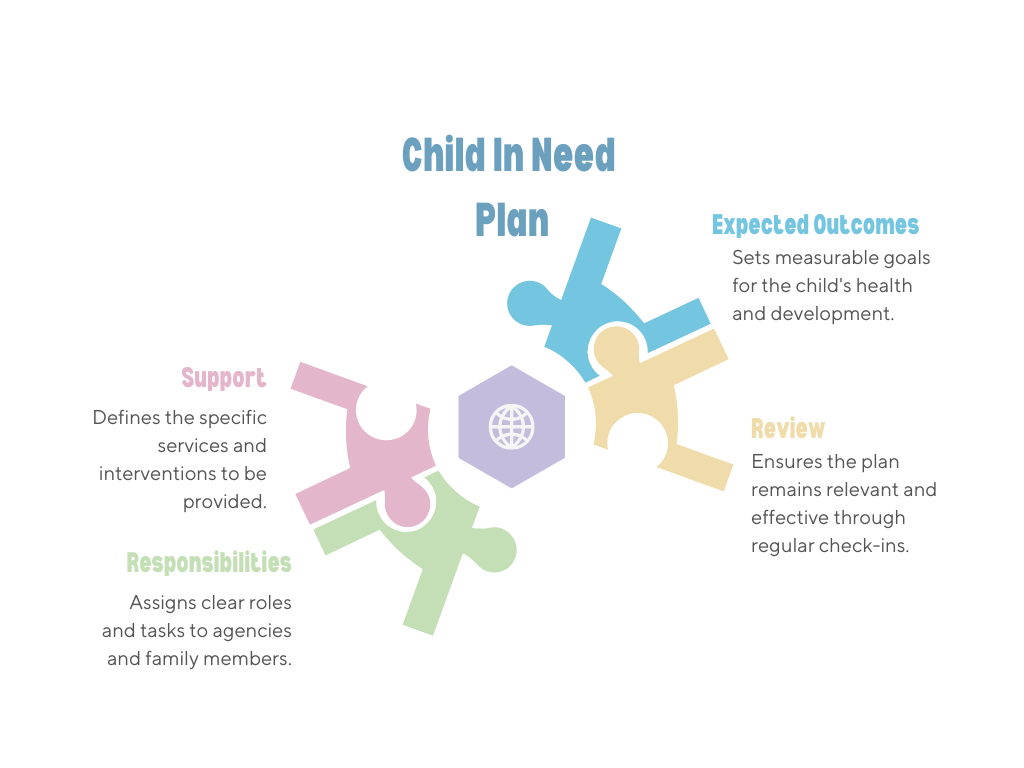For professionals dedicated to supporting vulnerable children and their families, the Children Act 1989 is the bedrock of practice.
Within this pivotal legislation, Section 17 stands as a cornerstone of preventative, supportive work.
It establishes a statutory duty for local authorities to provide services to 'children in need,' focusing on safeguarding their welfare and promoting their development within their family environment.
Key Takeaways
- A Legal Duty: Section 17 imposes a clear statutory duty on local authorities to support children in need within their area.
- Broad Definition: A 'child in need' is a child who is unlikely to achieve a reasonable standard of health or development without support.
- A Collaborative Process: The assessment is a holistic, multi-agency process that must be completed in a timely manner, with the child's wishes and feelings at its heart.
- A Plan of Action: The outcome is a Child in Need Plan—a live document detailing the support, responsibilities, and expected outcomes, which is reviewed regularly.

The Legal Duty and Definition of a 'Child in Need'
Section 17 of the Children Act 1989 places a general duty on every local authority to "safeguard and promote the welfare of children within their area who are in need." Furthermore, it mandates that authorities must, where consistent with this duty, promote the upbringing of such children by their families by providing a range of services appropriate to their needs.
A child is legally defined as being 'in need' if they meet one or more of the following criteria:
- They are unlikely to achieve or maintain a reasonable standard of health or development without the provision of services from the local authority.
- Their health or development is likely to be significantly impaired, or further impaired, without the provision of such services.
- They are disabled. The Act defines a disabled child as one who is "blind, deaf or dumb or suffers from mental disorder of any kind or is substantially and permanently handicapped by illness, injury or congenital deformity or such other disability as may be prescribed."
This definition encompasses a wide range of circumstances, including children with Special Educational Needs and Disabilities (SEND), young carers, children in the youth justice system, and asylum-seeking children.

The Section 17 Assessment Process in Action
When a child is suspected to be in need, a statutory assessment is triggered. This process is designed to be thorough, collaborative, and focused on the child's lived experience.
Requesting an Assessment A request for a Section 17 assessment can be made by anyone. This includes a parent or the child themselves, who can ask a professional such as a GP or health visitor to contact children's services on their behalf. It is recommended that requests are made in writing, clearly outlining the child’s needs and the required support. Each Local Safeguarding Children Board produces a threshold document that sets out the specific criteria for when a case should be referred for a statutory assessment.
A Holistic and Timely Evaluation The assessment is not a simple form-filling exercise; it is a professional analysis. It must address key questions about the child's developmental needs, the parents' capacity to respond to those needs, and the impact of wider family and environmental factors. Crucially, the child's own wishes and feelings must be sought, heard, and recorded. The local authority has a maximum of 45 working days to complete this assessment.
Principles of Good Practice Throughout the assessment, professionals should adhere to key principles, including working in a strengths-based and solution-focused way, obtaining consent for information sharing (unless doing so would place the child at risk of significant harm), and ensuring the family is fully informed and supported to participate.

The Child in Need Plan and Ongoing Support
If the assessment concludes that a child is in need, a Child in Need Plan is developed. This is a multi-agency plan, created in collaboration with the family, which turns the assessment's findings into tangible action.
A robust plan will clearly outline:
- The overall objectives and expected outcomes.
- The specific services to be provided and their purpose.
- Clear responsibilities, naming which agency or individual will deliver each action.
- Realistic timescales for completion.
The plan is a dynamic document. The first review must be held within 3 months of the plan's start, with further reviews at least every 6 months thereafter. These reviews are essential to check progress, avoid drift, and ensure the plan remains relevant to the child's changing circumstances. Support can be "stepped down" to early help services if sufficient progress is made, or "stepped up" to a Section 47 child protection investigation if risks escalate.
The types of support available under Section 17 are designed to be flexible and can include practical help like day care or financial assistance, developmental support such as counselling and recreational activities, and in some cases, the provision of accommodation.

Conclusion
Section 17 of the Children Act 1989 is far more than a legal provision; it is a powerful framework for empowerment. It enables professionals to provide proactive, holistic, and collaborative support that can fundamentally improve the life chances of vulnerable children. By understanding the legal duties, the nuanced assessment process, and the importance of a well-constructed Child in Need Plan, professionals can ensure they are fulfilling the core promise of the legislation: to safeguard and promote the welfare of every child in need.
Sources
- Children Act 1989. (2025, October 12). Children Act 1989. Legislation.gov.uk. Retrieved October 14, ͏2025, from https://www.legislation.gov.uk/ukpga/1989/41/contents
- Coram Child Law Advice. (2024, August 8). Child in need. childlawadvice.org.uk. Retrieved October 14, 2025, from https://childlawadvice.org.uk/information-pages/child-in-need-services/#elementor-toc__heading-anchor-4
- Dudley Metropolitan Borough Council. (n.d.). What is a Child in Need Plan? A guide for parents and carers. In Dudley Metropolitan Borough Council. Retrieved October 14, 2025, from https://proceduresonline.com/trixcms1/media/11335/child-in-need-guide-for-parents-and-carers.pdf
- Leicester City Council. (2025, April 17). Child in need plans and reviews. Retrieved October 14, 2025, from https://llrcs-leicestercity.trixonline.co.uk/chapter/child-in-need-plans-and-reviews#working-within-a-practice-framework
- PROJECT17. (2024). Challenging refusals to assess or provide support under Section 17 Children Act 1989. Retrieved October 14, 2025, from https://www.project17.org.uk/media/8dc89674b5e67e7/challenging-refusals-to-assess-or-support-under-s17-april-24.pdf
- TSCPP. (n.d.). Children in need procedure. Tees Safeguarding Children Partnerships' Procedures. Retrieved October 14, 2025, from https://www.teescpp.org.uk/procedures-for-the-safeguarding-process/3-children-in-need/
- Who are "children in need"? | Children's Commissioner for England. (2023, October 27). Children's Commissioner for England. Retrieved October 14, 2025, from https://www.childrenscommissioner.gov.uk/blog/who-are-children-in-need/




